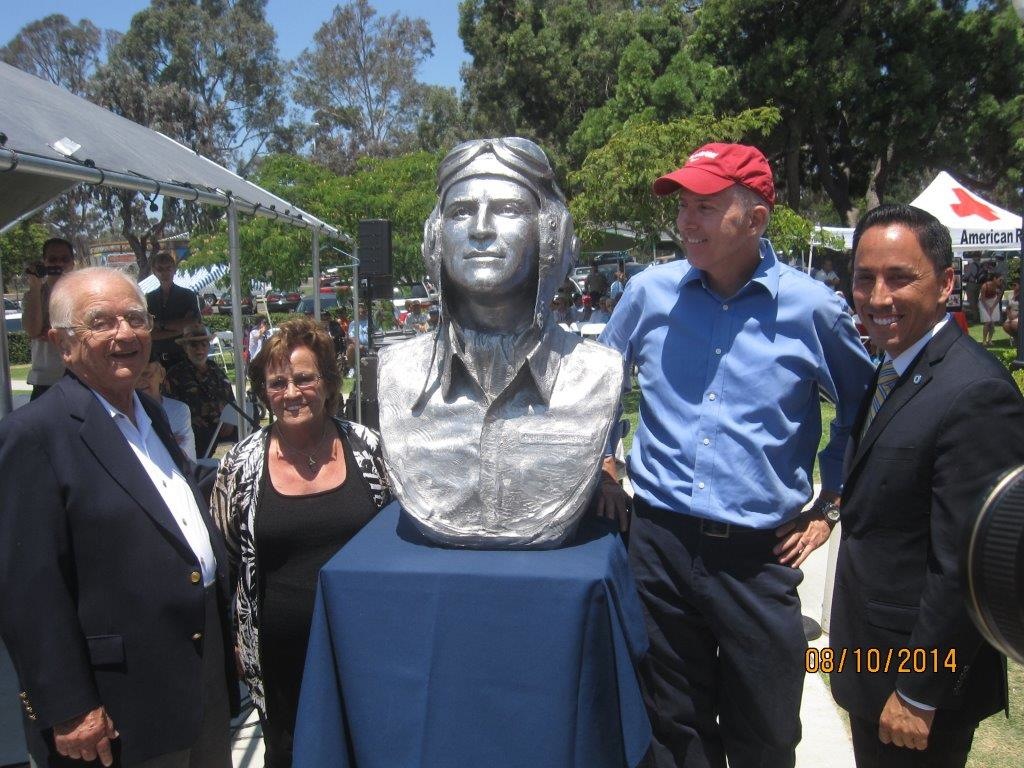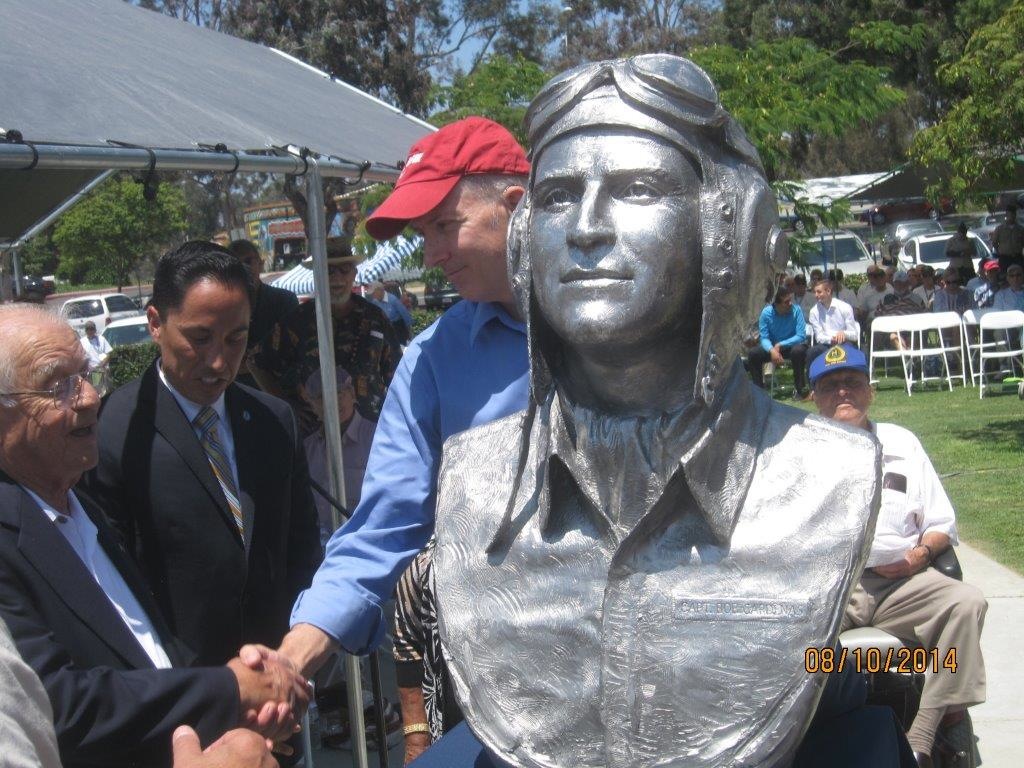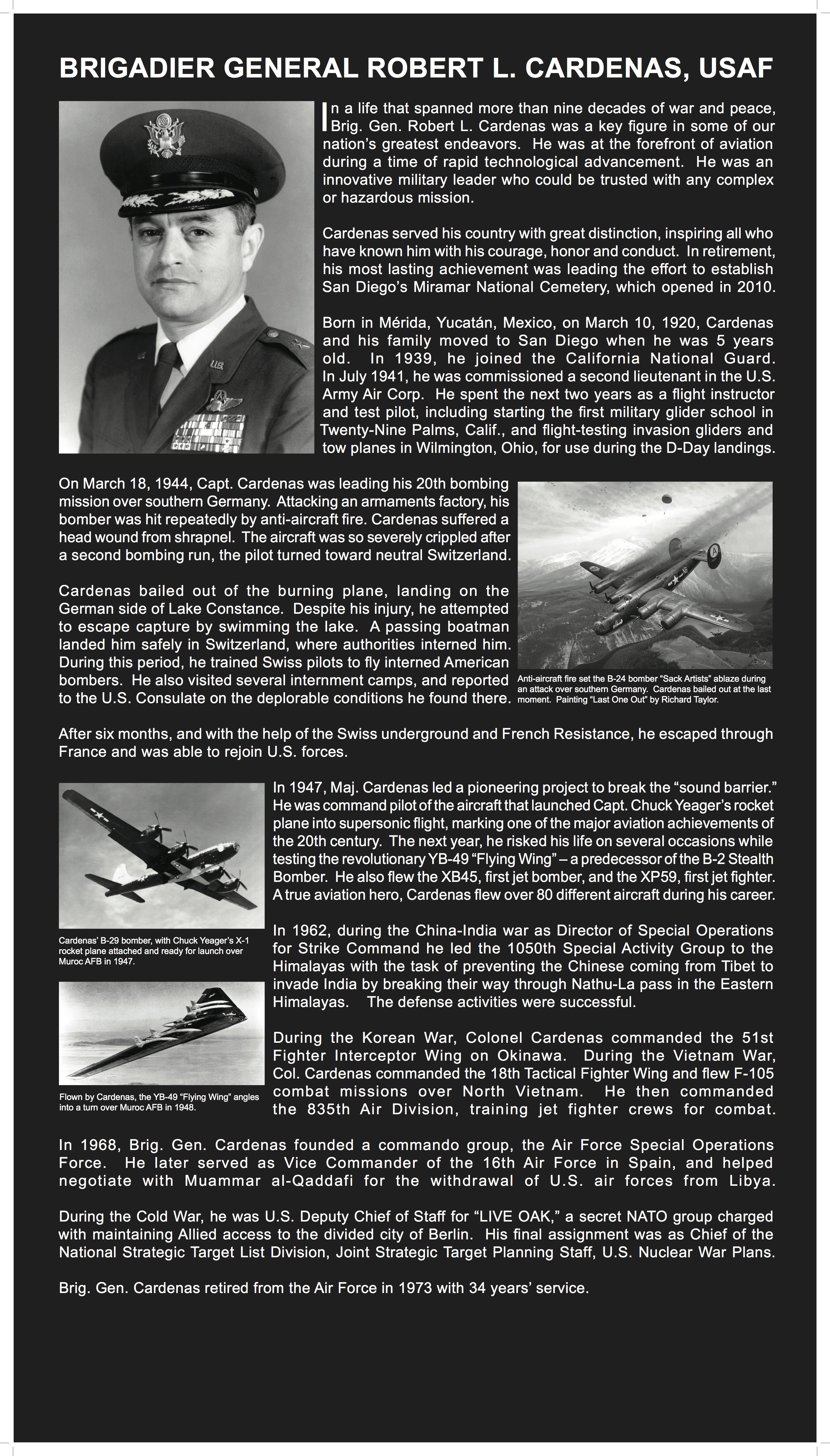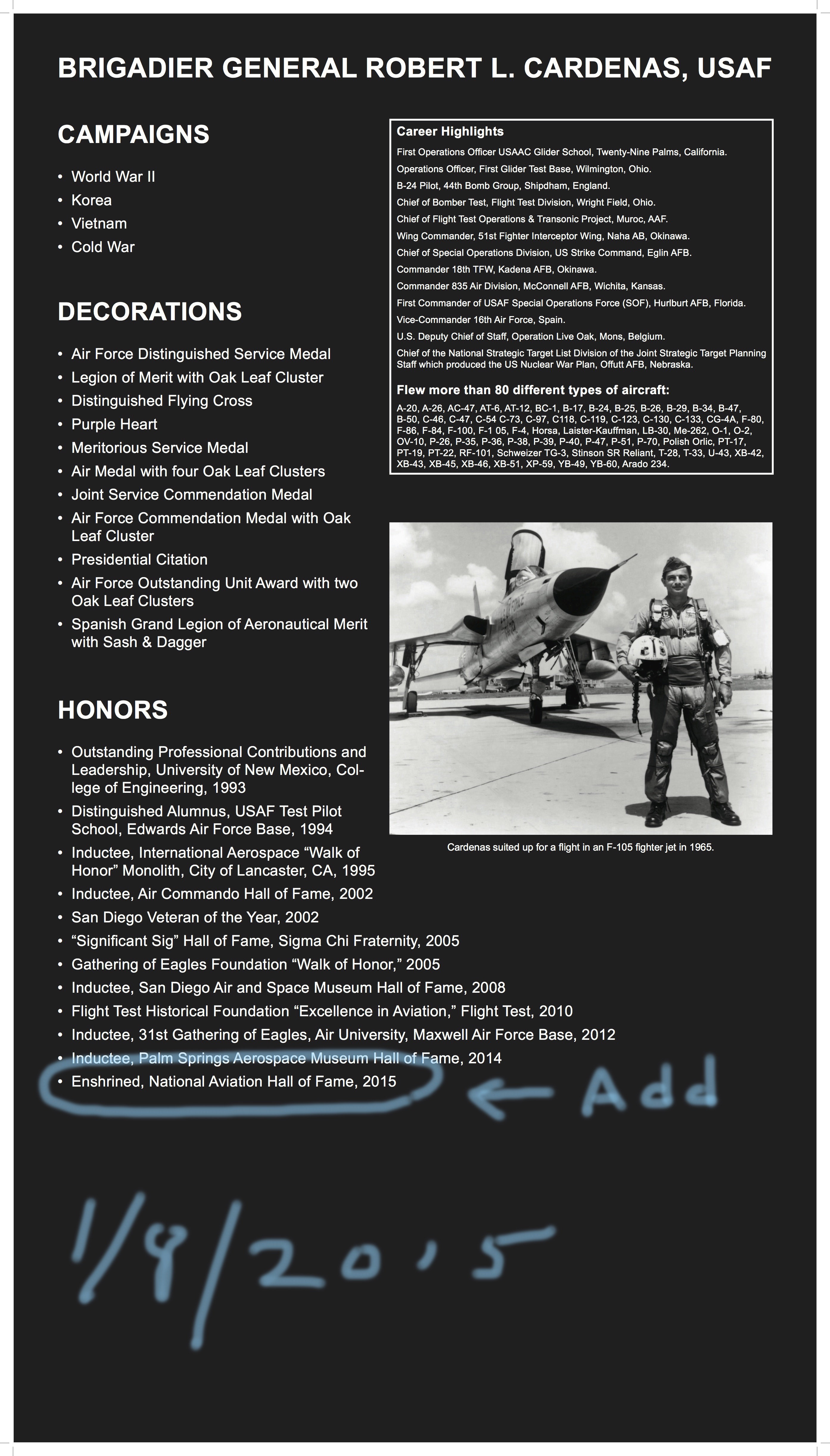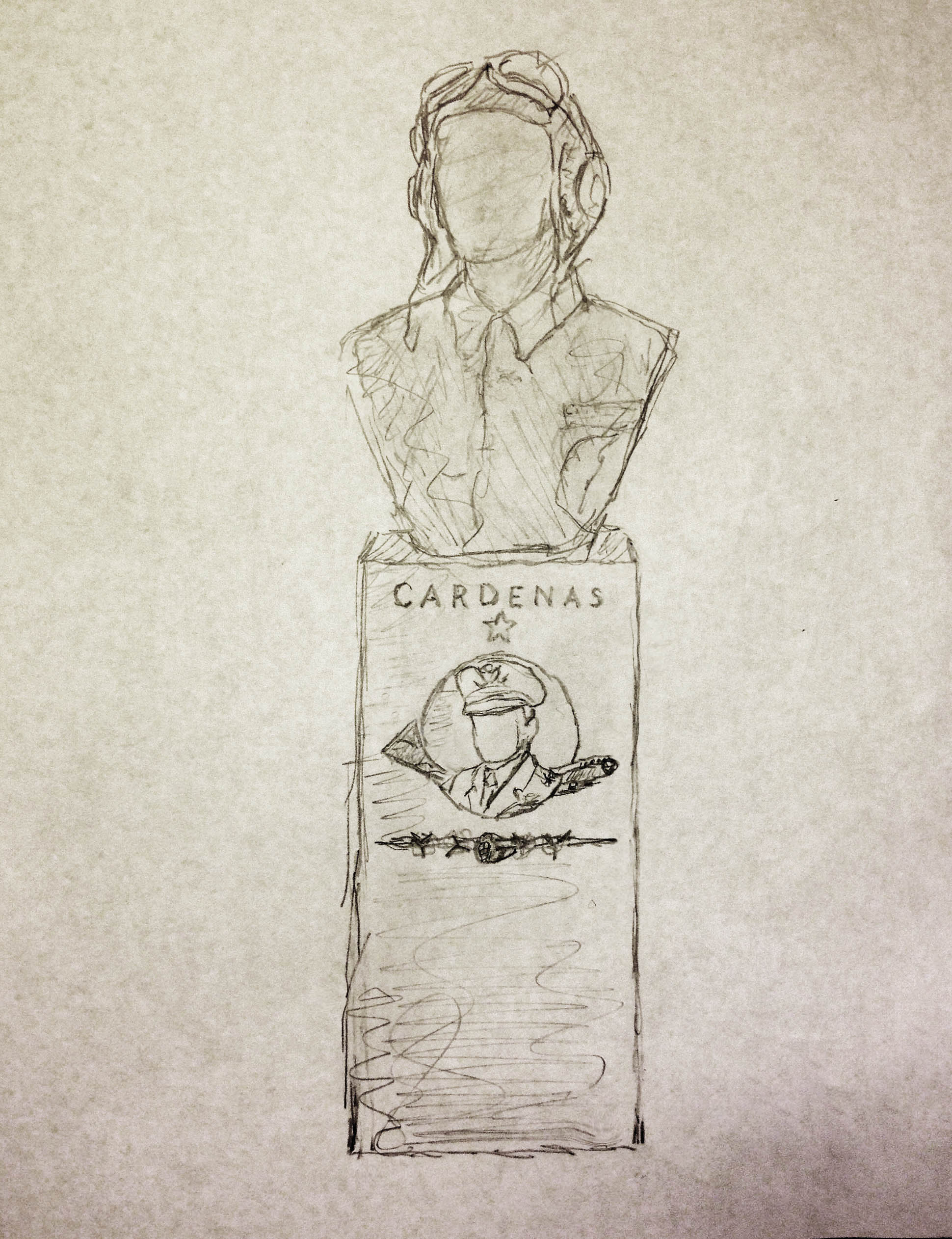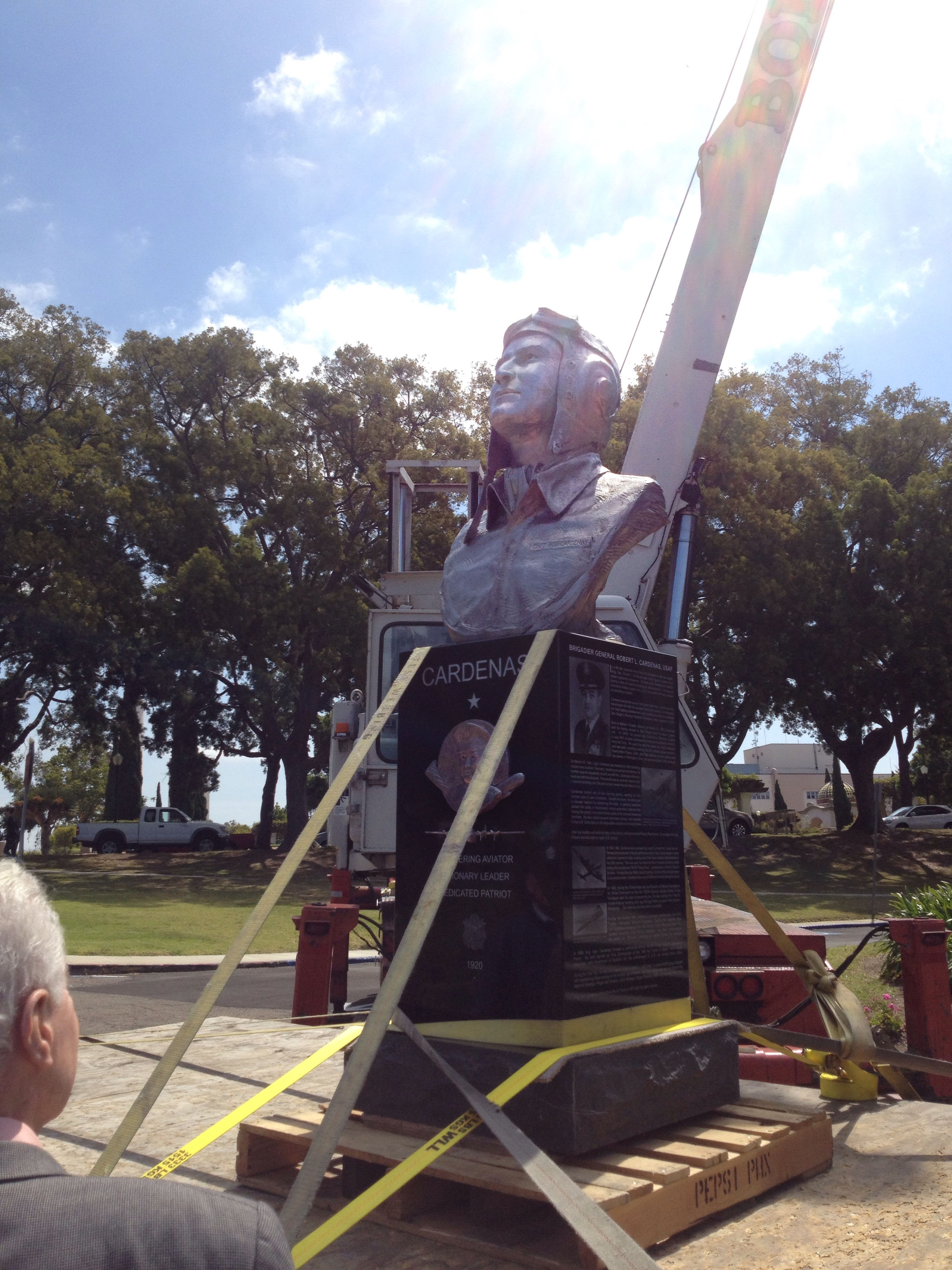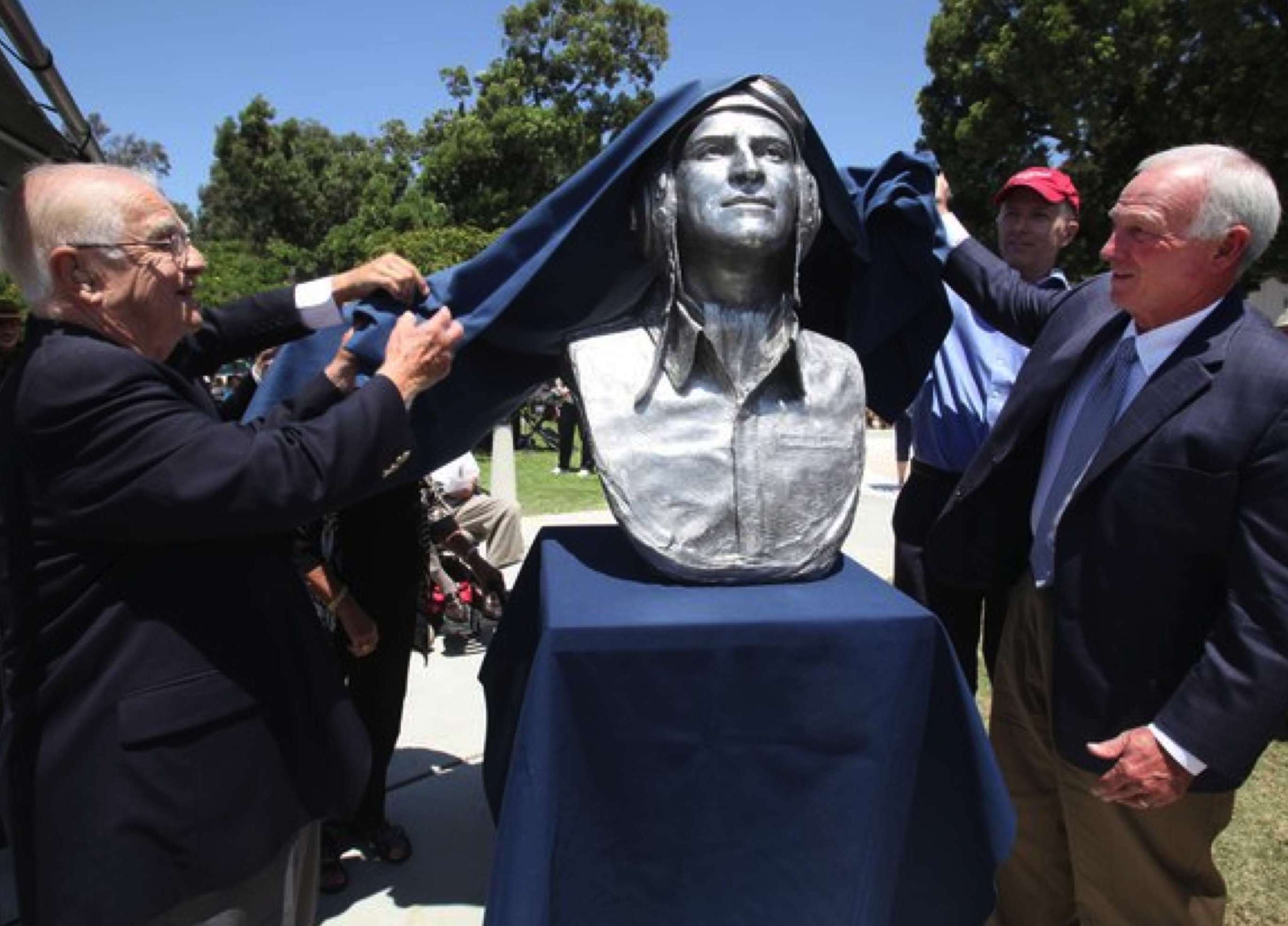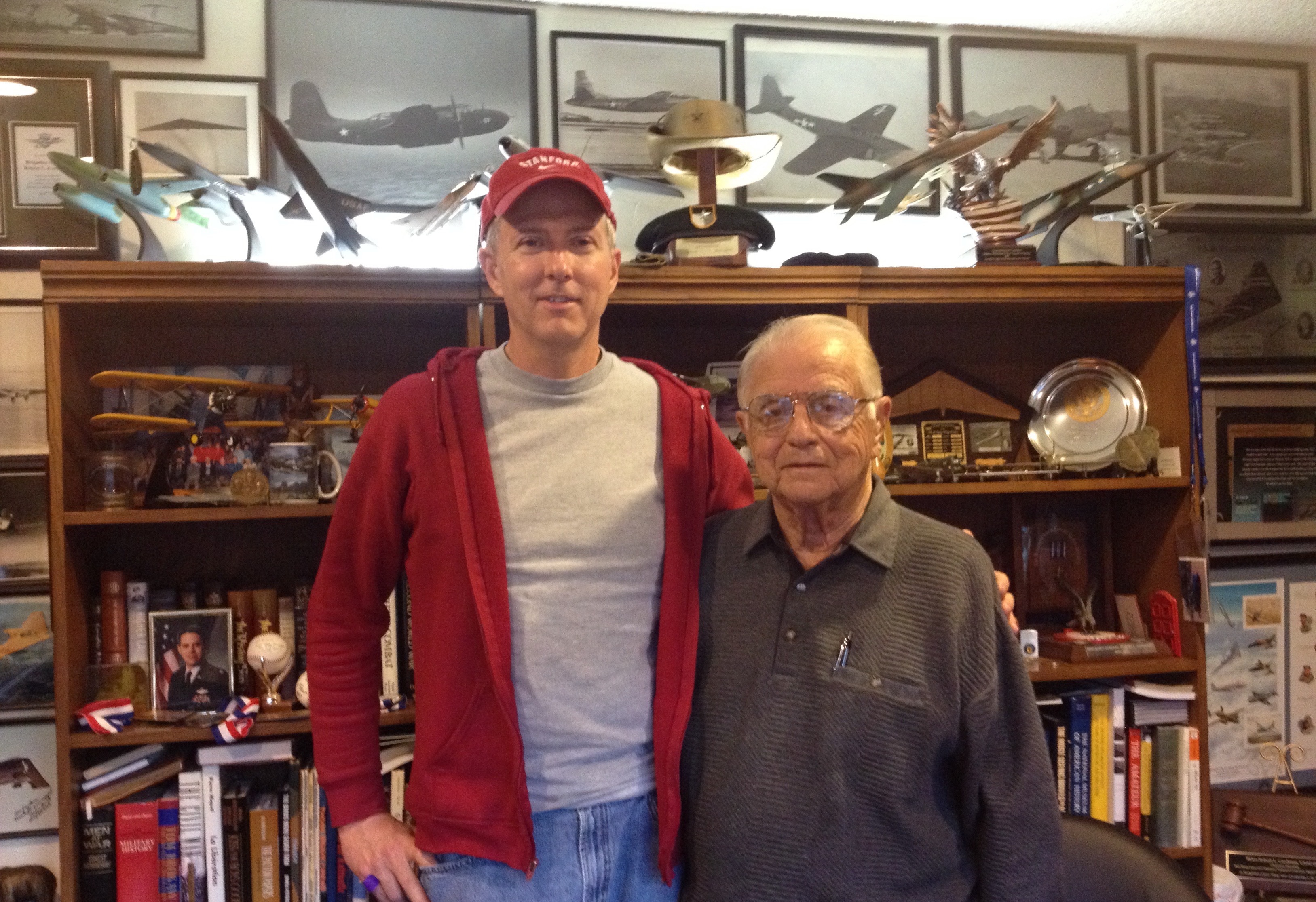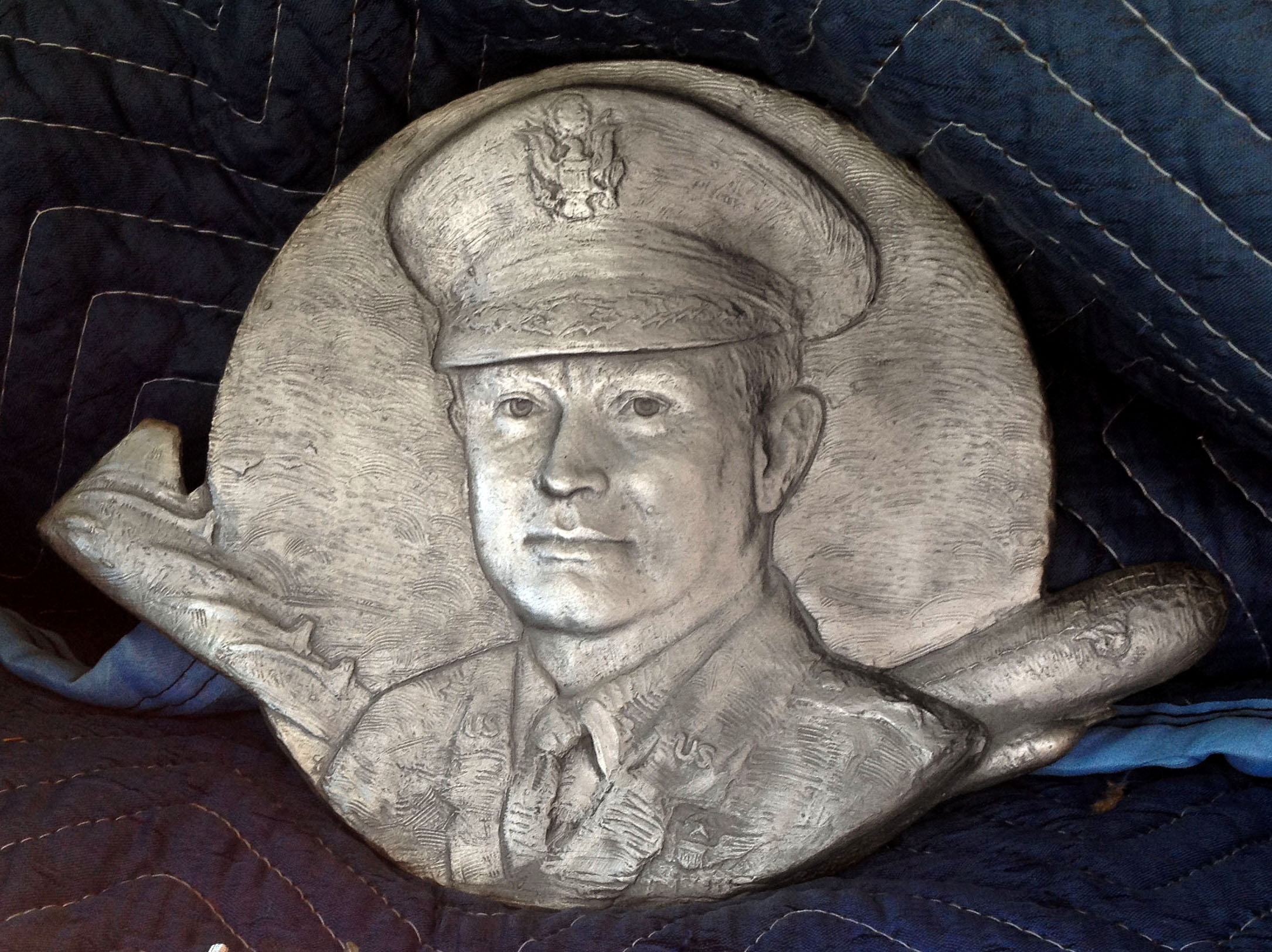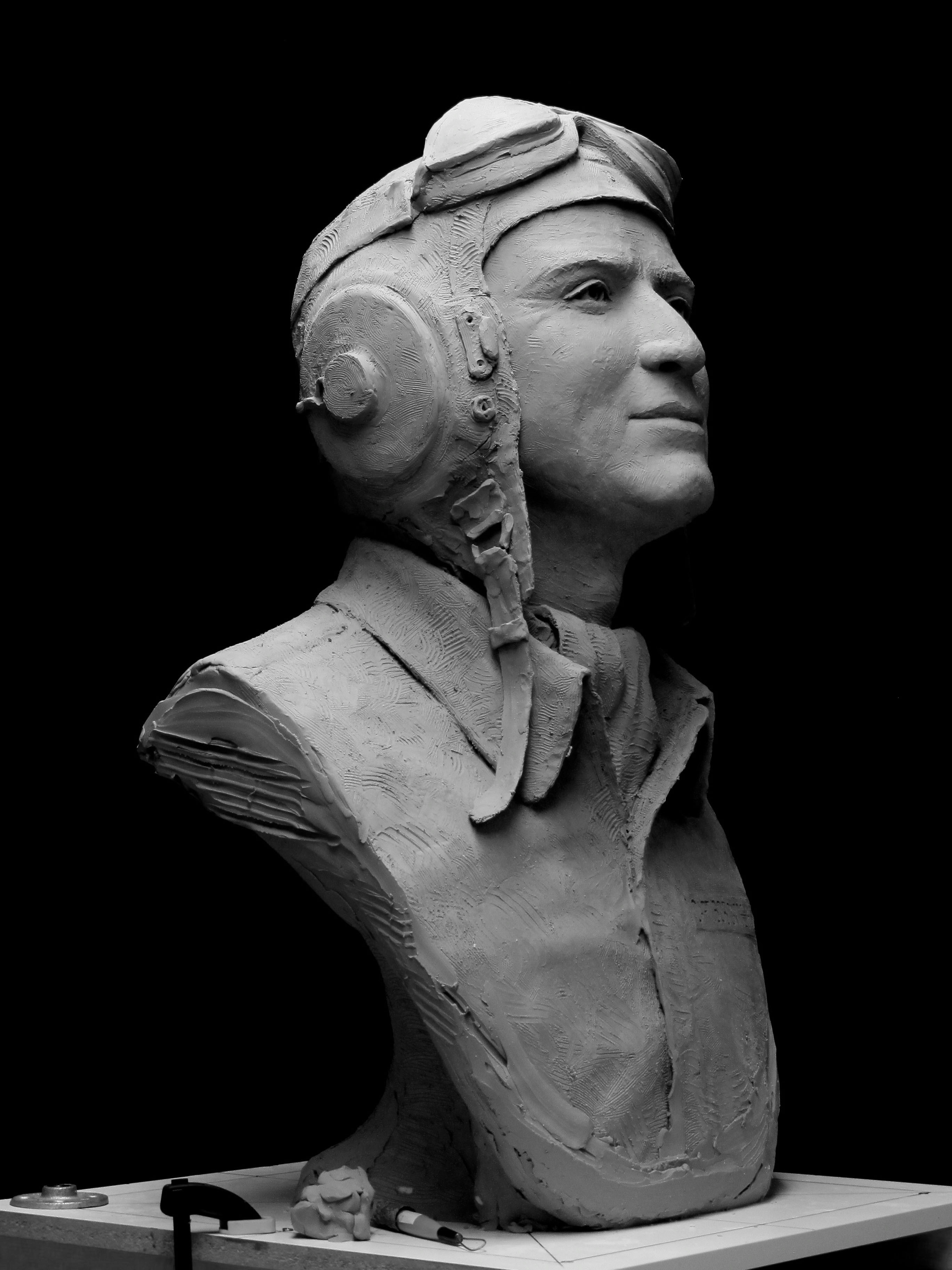The text on the granite reads:
BRIGADIER GENERAL ROBERT L. CARDENAS, USAF
In a life that spanned more than nine decades of war and peace, Brig. Gen. Robert L. Cardenas was a key figure in some of our nation’s greatest endeavors. He was at the forefront of aviation
during a time of rapid technological advancement. He was an innovative military leader who could be trusted with any complex or hazardous mission.
Cardenas served his country with great distinction, inspiring all who have known him with his courage, honor and conduct. In retirement, his most lasting achievement was leading the effort to establish San Diego’s Miramar National Cemetery, which opened in 2010.
Born in Mérida, Yucatán, Mexico, on March 10, 1920, Cardenas and his family moved to San Diego when he was 5 years old. In 1939, he joined the California National Guard. In July 1941, he was commissioned a second lieutenant in the U.S. Army Air Corp. He spent the next two years as a flight instructor and test pilot, including starting the first military glider school in
Twenty-Nine Palms, Calif., and flight-testing invasion gliders and tow planes in Wilmington, Ohio, for use during the D-Day landings.
On March 18, 1944, Capt. Cardenas was leading his 20th bombing mission over southern Germany. Attacking an armaments factory, his bomber was hit repeatedly by anti-aircraft fire. Cardenas suffered a head wound from shrapnel. The aircraft was so severely crippled after a second bombing run, the pilot turned toward neutral Switzerland.
Cardenas bailed out of the burning plane, landing on the
German side of Lake Constance. Despite his injury, he attempted
to escape capture by swimming the lake. A passing boatman
landed him safely in Switzerland, where authorities interned him.
During this period, he trained Swiss pilots to fly interned American
bombers. He also visited several internment camps, and reported
to the U.S. Consulate on the deplorable conditions he found there. moment. Painting “Last One Out” by Richard Taylor.
After six months, and with the help of the Swiss underground and French Resistance, he escaped through France and was able to rejoin U.S. forces.
Cardenas’ B-29 bomber, with Chuck Yeager’s X-1 rocket plane attached and ready for launch over Muroc AFB in 1947.
Flown by Cardenas, the YB-49 “Flying Wing” angles into a turn over Muroc AFB in 1948.
In 1947, Maj. Cardenas led a pioneering project to break the “sound barrier.” He was command pilot of the aircraft that launched Capt. Chuck Yeager’s rocket plane into supersonic flight, marking one of the major aviation achievements of the 20th century. The next year, he risked his life on several occasions while testing the revolutionary YB-49 “Flying Wing” – a predecessor of the B-2 Stealth Bomber. He also flew the XB45, first jet bomber, and the XP59, first jet fighter. A true aviation hero, Cardenas flew over 80 different aircraft during his career.
In 1962, during the China-India war as Director of Special Operations for Strike Command he led the 1050th Special Activity Group to the Himalayas with the task of preventing the Chinese coming from Tibet to invade India by breaking their way through Nathu-La pass in the Eastern Himalayas. The defense activities were successful.
During the Korean War, Colonel Cardenas commanded the 51st Fighter Interceptor Wing on Okinawa. During the Vietnam War, Col. Cardenas commanded the 18th Tactical Fighter Wing and flew F-105 combat missions over North Vietnam. He then commanded the 835th Air Division, training jet fighter crews for combat.
Anti-aircraft fire set the B-24 bomber “Sack Artists” ablaze during an attack over southern Germany. Cardenas bailed out at the last
In 1968, Brig. Gen. Cardenas founded a commando group, the Air Force Special Operations Force. He later served as Vice Commander of the 16th Air Force in Spain, and helped negotiate with Muammar al-Qaddafi for the withdrawal of U.S. air forces from Libya.
During the Cold War, he was U.S. Deputy Chief of Staff for “LIVE OAK,” a secret NATO group charged with maintaining Allied access to the divided city of Berlin. His final assignment was as Chief of the National Strategic Target List Division, Joint Strategic Target Planning Staff, U.S. Nuclear War Plans.
Brig. Gen. Cardenas retired from the Air Force in 1973 with 34 years’ service."
CAMPAIGNS
Career Highlights
First Operations Officer USAAC Glider School, Twenty-Nine Palms, California. Operations Officer, First Glider Test Base, Wilmington, Ohio.
B-24 Pilot, 44th Bomb Group, Shipdham, England.
Chief of Bomber Test, Flight Test Division, Wright Field, Ohio.
Chief of Flight Test Operations & Transonic Project, Muroc, AAF.
Wing Commander, 51st Fighter Interceptor Wing, Naha AB, Okinawa.
Chief of Special Operations Division, US Strike Command, Eglin AFB.
Commander 18th TFW, Kadena AFB, Okinawa.
Commander 835 Air Division, McConnell AFB, Wichita, Kansas.
First Commander of USAF Special Operations Force (SOF), Hurlburt AFB, Florida.
Vice-Commander 16th Air Force, Spain.
U.S. Deputy Chief of Staff, Operation Live Oak, Mons, Belgium.
Chief of the National Strategic Target List Division of the Joint Strategic Target Planning Staff which produced the US Nuclear War Plan, Offutt AFB, Nebraska.
Flew more than 80 different types of aircraft:
A-20, A-26, AC-47, AT-6, AT-12, BC-1, B-17, B-24, B-25, B-26, B-29, B-34, B-47, B-50, C-46, C-47, C-54 C-73, C-97, C118, C-119, C-123, C-130, C-133, CG-4A, F-80, F-86, F-84, F-100, F-1 05, F-4, Horsa, Laister-Kauffman, LB-30, Me-262, O-1, O-2, OV-10, P-26, P-35, P-36, P-38, P-39, P-40, P-47, P-51, P-70, Polish Orlic, PT-17, PT-19, PT-22, RF-101, Schweizer TG-3, Stinson SR Reliant, T-28, T-33, U-43, XB-42, XB-43, XB-45, XB-46, XB-51, XP-59, YB-49, YB-60, Arado 234.
• World War II • Korea
• Vietnam
• Cold War
DECORATIONS
• Air Force Distinguished Service Medal
• Legion of Merit with Oak Leaf Cluster
• Distinguished Flying Cross
• Purple Heart
• Meritorious Service Medal
• Air Medal with four Oak Leaf Clusters
• Joint Service Commendation Medal
• Air Force Commendation Medal with Oak Leaf Cluster
• Presidential Citation
• Air Force Outstanding Unit Award with two Oak Leaf Clusters
• Spanish Grand Legion of Aeronautical Merit with Sash & Dagger
HONORS
• Outstanding Professional Contributions and Leadership, University of New Mexico, Col- lege of Engineering, 1993
• Distinguished Alumnus, USAF Test Pilot School, Edwards Air Force Base, 1994
• Inductee, International Aerospace “Walk of Honor” Monolith, City of Lancaster, CA, 1995
Cardenas suited up for a flight in an F-105 fighter jet in 1965.
• Inductee, Air Commando Hall of Fame, 2002
• San Diego Veteran of the Year, 2002
• “Significant Sig” Hall of Fame, Sigma Chi Fraternity, 2005
• Gathering of Eagles Foundation “Walk of Honor,” 2005
• Inductee, San Diego Air and Space Museum Hall of Fame, 2008
• Flight Test Historical Foundation “Excellence in Aviation,” Flight Test, 2010
• Inductee, 31st Gathering of Eagles, Air University, Maxwell Air Force Base, 2012
• Inductee, Palm Springs Aerospace Museum Hall of Fame, 2014
• Enshrined, National Aviation Hall of Fame, 2015


